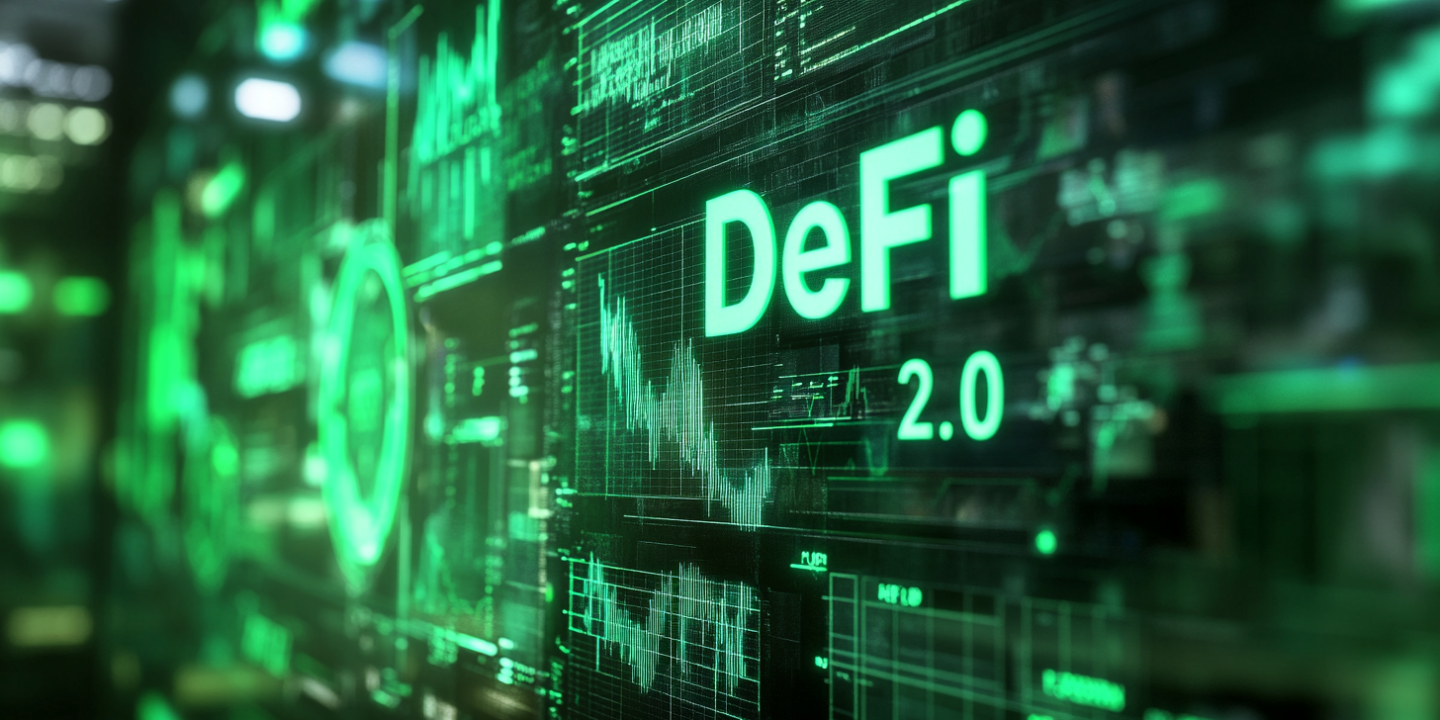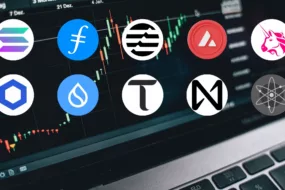
What is DeFi 2.0?
Decentralized Finance (DeFi) has revolutionized the financial industry by allowing peer-to-peer transactions without intermediaries. As the space evolves, DeFi 2.0 emerges, building on the original concept with enhanced scalability, security, and user experience. Understanding DeFi 2.0 is crucial for beginners as it represents the next phase of innovation in decentralized finance, offering more efficient protocols and addressing the limitations of its predecessor. Right from the foundations to the future of DeFI 2.0, this article will provide a comprehensive overview.
Foundations of DeFi 2.0
Key differences between DeFi 1.0 and DeFi 2.0
DeFi 2.0 represents the next evolutionary step in decentralized finance, offering significant advancements over DeFi 1.0. The key differences between DeFi 1.0 and DeFi 2.0 lie in their technological foundations and the problems they address. DeFi 1.0 introduced concepts like decentralized exchanges, lending platforms, and yield farming, but it faced challenges such as high gas fees, scalability issues, and security vulnerabilities.
Technological advancements driving DeFi 2.0
Technological advancements are at the heart of DeFi 2.0, with a focus on improving scalability and security. Layer 2 solutions, such as rollups and sidechains, have been developed to handle more transactions off the main Ethereum blockchain, reducing congestion and lowering transaction costs. These solutions allow DeFi platforms to scale effectively while maintaining decentralization.
Enhanced security and scalability features
Enhanced security features are another cornerstone of DeFi 2.0. While DeFi 1.0 often struggled with hacks and smart contract exploits, DeFi 2.0 introduced more robust security measures. Multi-signature wallets, decentralized insurance protocols, and improved audit practices help protect user funds and maintain trust in the ecosystem.
Introduction to new protocols and innovations
DeFi 2.0 also brings new protocols and innovations that enhance user experience and broaden the scope of decentralized finance. Protocols like OlympusDAO introduce concepts such as algorithmic reserve currencies, which aim to create more stable and predictable economic models. These innovations provide more options for users to earn yields, borrow, and trade in a decentralized manner.
Core Components of DeFi 2.0
DeFi 2.0 is built on several core components that enhance and expand the functionalities introduced by DeFi 1.0. These components include the evolution of decentralized exchanges (DEXs), improvements in yield farming and liquidity mining, the advancement of automated market makers (AMMs), enhanced lending and borrowing platforms, and improved governance mechanisms.
Decentralized Exchanges (DEXs) and Their Evolution
Decentralized exchanges (DEXs) were one of the significant innovations of DeFi 1.0, providing users with the ability to trade cryptocurrencies directly from their wallets without intermediaries. DeFi 2.0 has seen the evolution of DEXs, with improvements in liquidity provision and user experience. Innovations like concentrated liquidity pools allow liquidity providers to specify price ranges, improving capital efficiency and reducing slippage.
Yield Farming and Liquidity Mining Improvements
Yield farming and liquidity mining were initially popularized during the DeFi 1.0 era, allowing users to earn rewards by providing liquidity to various protocols. DeFi 2.0 introduces more sustainable and user-friendly yield farming strategies. Protocols are now implementing dynamic reward structures that adjust based on market conditions, reducing the risk of unsustainable token emissions.
Automated Market Makers (AMMs) 2.0
Automated market makers (AMMs) are a fundamental component of DEXs, allowing users to trade assets without relying on traditional order books. AMM 2.0 introduces significant enhancements, such as dynamic fee structures that adjust based on market volatility and trading volume. This reduces impermanent loss for liquidity providers and enhances overall market efficiency.
Enhanced Lending and Borrowing Platforms
Lending and borrowing platforms in DeFi 2.0 are becoming more efficient and user-friendly. Improvements include better collateral management and risk assessment, reducing the chances of liquidation, and enhancing borrower protection. Platforms are integrating multi-collateral support, allowing users to borrow against a diverse range of assets.
Improved Governance Mechanisms
Governance is a critical aspect of DeFi, and DeFi 2.0 brings significant advancements in this area. Improved governance mechanisms ensure that protocol decisions are made more democratically and transparently. Enhanced voting systems, such as quadratic voting and liquid democracy, allow for more nuanced and representative decision-making.
Key Benefits of DeFi 2.0
DeFi 2.0 offers a host of benefits that significantly enhance the decentralized finance ecosystem. These improvements address some of the key challenges faced by DeFi 1.0, leading to a more secure, efficient, and user-friendly financial system.
Increased Security and Reduced Risk
One of the primary benefits of DeFi 2.0 is the heightened focus on security. Enhanced smart contract audits and the implementation of advanced cryptographic techniques reduce the risk of hacks and vulnerabilities. Protocols are also introducing insurance mechanisms and safety modules to protect users’ funds in case of unforeseen events. These measures collectively ensure a safer environment for participants, fostering greater trust and confidence in DeFi platforms.
Greater Efficiency and Lower Transaction Costs
DeFi 2.0 protocols are designed to be more efficient, which translates to lower transaction costs for users. Innovations like layer-2 scaling solutions and optimized consensus algorithms help reduce gas fees and improve transaction throughput. As a result, users can execute trades, lend, and borrow at a fraction of the cost and time compared to traditional DeFi systems. This efficiency is crucial for the mainstream adoption of DeFi, making it accessible to a broader audience.
Improved User Experience and Accessibility
User experience is a major focus of DeFi 2.0. Enhanced interface designs, streamlined onboarding processes, and better customer support make it easier for new users to navigate and engage with DeFi platforms.
Enhanced Interoperability and Cross-Chain Solutions
DeFi 2.0 emphasizes interoperability, enabling seamless interaction between different blockchain networks. Cross-chain bridges and interoperable protocols allow users to transfer assets and utilize services across various platforms without friction. This connectivity enhances the liquidity and utility of digital assets, fostering a more cohesive and integrated DeFi ecosystem.
Stronger Community Governance and Participation
Governance is more inclusive and effective in DeFi 2.0, with innovative voting mechanisms and decentralized decision-making processes. Enhanced governance structures ensure that all stakeholders have a voice in protocol development and management. This participatory approach not only democratizes control but also drives the alignment of interests, resulting in more sustainable and resilient DeFi projects.
Challenges and Risks in DeFi 2.0
While DeFi 2.0 brings significant advancements, it also faces several challenges and risks that need to be addressed to ensure its sustainable growth and adoption.
Security Vulnerabilities and Potential Exploits
Despite enhanced security measures, DeFi 2.0 is not immune to vulnerabilities. Smart contract bugs, flash loan attacks, and other exploits remain a threat. Continuous auditing and real-time monitoring are crucial to mitigate these risks, but the possibility of unforeseen vulnerabilities always exists, posing a significant challenge to the ecosystem.
Regulatory Challenges and Compliance Issues
The regulatory landscape for DeFi remains uncertain and fragmented across different jurisdictions. Compliance with varying laws and regulations is complex, particularly regarding anti-money laundering (AML) and know-your-customer (KYC) requirements. Striking a balance between decentralization and regulatory compliance is essential, yet challenging, to ensure the longevity and legality of DeFi platforms.
Market Volatility and Liquidity Concerns
DeFi markets are highly volatile, which can lead to significant price swings and liquidity issues. Rapid price fluctuations can result in impermanent loss for liquidity providers and create an unstable environment for traders and investors. Developing mechanisms to manage and mitigate market volatility and ensure sufficient liquidity is crucial for the stability of DeFi 2.0.
User Education and Awareness
A major challenge for DeFi 2.0 is user education. Many potential users lack understanding of how DeFi works and the associated risks. Comprehensive educational resources and user-friendly interfaces are essential to improve user awareness and ensure that participants can make informed decisions, thus fostering broader and safer adoption of DeFi 2.0.
Popular DeFi 2.0 Projects and Platforms
Overview of Leading DeFi 2.0 Projects
DeFi 2.0 projects are revolutionizing the decentralized finance landscape by introducing innovative features and enhanced protocols. These projects aim to solve the limitations of DeFi 1.0, such as liquidity issues and user experience challenges while offering new ways to engage in decentralized finance.
Case Study: OlympusDAO and Its Impact on DeFi 2.0
OlympusDAO is a prime example of a successful DeFi 2.0 project. It introduced the concept of protocol-owned liquidity, which mitigates the dependency on external liquidity providers. By owning its liquidity, OlympusDAO ensures stability and reduces the risks associated with liquidity withdrawal, a common issue in DeFi 1.0. OlympusDAO’s approach has set a new standard in liquidity management and has inspired other projects to adopt similar strategies, marking a significant impact on the DeFi 2.0 ecosystem.
Other Notable Projects and Their Contributions
Another significant player in the DeFi 2.0 space is Abracadabra Money, which offers a platform for borrowing against interest-bearing tokens. This allows users to unlock liquidity from assets that would otherwise be idle. Furthermore, Tokemak is revolutionizing the liquidity provision process by creating a decentralized liquidity market, where users can provide liquidity without dealing with the complexities of traditional methods.
Analysis of Market Performance and Adoption
The market performance of DeFi 2.0 projects has shown impressive growth, attracting significant capital and user participation. OlympusDAO, for instance, has amassed a substantial market cap and user base, demonstrating the viability of its innovative model. Similarly, projects like Abracadabra Money and Tokemak have seen rapid adoption, indicating a strong demand for advanced DeFi solutions.
Future of DeFi 2.0
Predicted trends in DeFi 2.0 include greater interoperability, enhanced security, and the rise of more robust governance models. These advancements are expected to significantly impact the broader financial ecosystem by providing more efficient, inclusive, and decentralized financial services. DeFi 2.0 will likely play a crucial role in shaping the future of decentralized finance, driving innovation and adoption while addressing the limitations of traditional financial systems and earlier DeFi iterations. As these trends unfold, DeFi 2.0 is poised to become a cornerstone of the global financial landscape.
Conclusion
DeFi 2.0 builds on the foundations of decentralized finance, enhancing its core components to offer increased benefits while addressing key challenges and risks. Understanding popular DeFi 2.0 projects and platforms can position you at the forefront of this evolving sector. Stay informed and proactive in exploring these innovations. Additionally, partner with Mudrex as it provides valuable insights and tools, empowering you to figure out the dynamic crypto landscape and make informed investment decisions.
So, what are you waiting for? Download the Mudrex app now!
FAQ Questions
- What is layer 2 in defi?
To improve their performance and scalability, layer 2 in DeFi refers to secondary frameworks or protocols built on top of existing blockchain systems (Layer 1, like Ethereum). Layer 2 solutions aim to handle transactions off the main blockchain, reducing congestion, lowering fees, and increasing transaction speeds, while still benefiting from the security and decentralization of the main blockchain.
- How does DeFi 2.0 improve liquidity?
DeFi 2.0 introduces protocol-owned liquidity to ensure more stable and sustainable liquidity for decentralized exchanges and lending platforms.
- Can DeFi 2.0 protocols reduce transaction fees?
Many DeFi 2.0 protocols leverage layer 2 solutions and other scalability improvements to significantly reduce transaction costs.
- Is DeFi 2.0 more secure than DeFi 1.0?
DeFi 2.0 aims to enhance security through better smart contract designs and more rigorous audits to prevent exploits and hacks.




